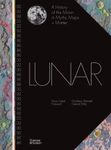Out of Print
By: Santi Cassisi(Author), Maurizio Salaris(Author)
538 pages, b/w illustrations, tables
![Old Stellar Populations Old Stellar Populations]()
Click to have a closer look
About this book
Contents
Biography
Related titles
About this book
Old Stellar Populations discusses the theoretical path to decoding the information gathered from observations of old stellar systems. It focuses on old stellar systems because these are the fossil record of galaxy formation and provide invaluable information ont he evolution of cosmic structures and the universe as a whole. The aim is to present results obtained in the past few years for theoretical developments in low mass star research and in advances in our knowledge of the evolution of old stellar systems. A particularly representative case is the recent discovery of multiple stellar populations in galactic globular clusters that represents one of the hottest topics in stellar and galactic astrophysics and is discussed in detail.
Contents
Preface XIII
1 Introduction1
1.1 Galaxy Formation 4
1.2 Decoding the Fossil Records: Photometric and Spectroscopic Diagnostics 6
1.3 Decoding the Fossil Record: the Tools 8
2 Low-MassStarPhysics 19
2.1 Basic Equations 19
2.2 The Thermodynamical Properties of Low-Mass Stars 30
2.3 Nuclear Energy Production and Nucleosynthesis 40
2.4 Radiative and Conductive Opacity 49
2.5 The Atmospheric Structure 58
2.6 Mass Loss 61
2.7 Diffusion Processes 65
2.8 Rotation 71
2.9 Internal Gravity Waves 75
2.10 Magnetic Fields 77
2.11 Thermohaline Mixing 78
3 From the Main Sequence to the Tip of the Red Giant Branch 83
3.1 Overview 83
3.2 Very Low-Mass Stars 84
3.3 The Main Sequence 94
3.4 The Standard Solar Model 103
3.5 Blue Stragglers 110
3.6 Subgiant Branch Evolution 121
3.7 Red Giant Branch Evolution 123
3.8 The Helium Flash 130
3.8.1 3D-Simulations of the Helium Flash 132
3.9 Theoretical Isochrones for the Hydrogen Burning Stages 134
4 Horizontal Branch and Red Clump 163
4.1 Overview 163
4.2 Mixing Processes 164
4.3 The Horizontal Branch Evolution 169
4.4 Extremely Hot Horizontal Branch and "Blue Hook" Stars 183
4.5 Low-Mass Pulsating Stars in the Core He-burning Stage 189
4.6 Red Clump Stars 206
4.7 The Effects of Non-canonical Processes on HB Evolution 213
5 Asymptotic Giant Branch 231
5.1 Overview 231
5.2 Early Asymptotic Giant Branch Evolution 232
5.3 The Thermally Pulsing Stage 236
5.4 Calibration of Evolutionary AGB Models 254
5.5 Synthetic AGB Stellar Models 257
5.6 Long Period Variables 260
5.7 Nucleocosmochronology 266
5.8 The End of the AGB and Post-AGB Evolution 268
6 White Dwarf Cooling Sequences 275
6.1 General Properties and Simple Models 278
6.2 Detailed Models 280
6.3 Colour–Magnitude Diagrams of WD Populations 294
6.4 Spectroscopic Classification of WDs 300
6.5 Low Mass CO- and He-core WDs 302
7 Resolved Old Stellar Populations in the Galaxy 305
7.1 Introduction 305
7.2 Old Star Cluster Distances 306
7.3 Old Star Cluster Ages 337
7.4 Ages of Old Field Stars from Photometry/Spectroscopy 352
7.5 Empirical Rotation/Activity–Age Relationships 358
7.6 Estimates of the Primordial Helium Abundance 362
7.7 Estimates of the Primordial Lithium Abundance 368
7.8 Multiple Stellar Populations in Galactic Globular Clusters 378
8 Resolved Composite Systems 399
8.1 Synthetic CMD-fitting 400
8.2 Multiple Isochrone-fitting 405
9 Unresolved Old Systems 411
9.1 Building Blocks of a SPSM 412
9.2 Low-Resolution Diagnostics 415
9.3 High-Resolution Diagnostics 455
9.4 Unresolved Composite Systems 473
9.5 Validation of Stellar Population Synthesis Techniques 475
References 481
Index 517
Customer Reviews
Biography
Santi Cassisi received his degree in physics from the University of Pisa, Italy, in 1991. He then spent a year at the Astronomical Observatory of Meudon-Paris, France, followed by a PhD-fellowship at the University of L'Aquila, Italy, from 1995 to 1997. In 1998, he accepted a post as staff researcher at the Collurania-Teramo-Observatory, a research unit of INAF. He currently holds a position as associate professor at the same institution. Professor Cassisi's research focuses on theoretical stellar evolution and its application to the study of both galactic and extra-galactic stellar populations. He has authored about 210 scientific papers, 115 of them in peer-reviewed journals, and a monograph.
Maurizio Salaris studied physics at the University of Rome 'La Sapienza', and then worked at the Collurania-Teramo-Observatory, Italy, the Institut d'Estudis Espacials de Catalunya in Barcelona, Spain, the Max Planck Institute for Astrophysics in Garching, Germany, and the Astrophysics Research Institute of the Liverpool John Moores University, UK, where he currently holds the post of Professor of Stellar Astrophysics. He has published about 150 papers in peer-reviewed journals and books, plus a monograph, co-authored by Santi Cassisi.
Out of Print
By: Santi Cassisi(Author), Maurizio Salaris(Author)
538 pages, b/w illustrations, tables



























